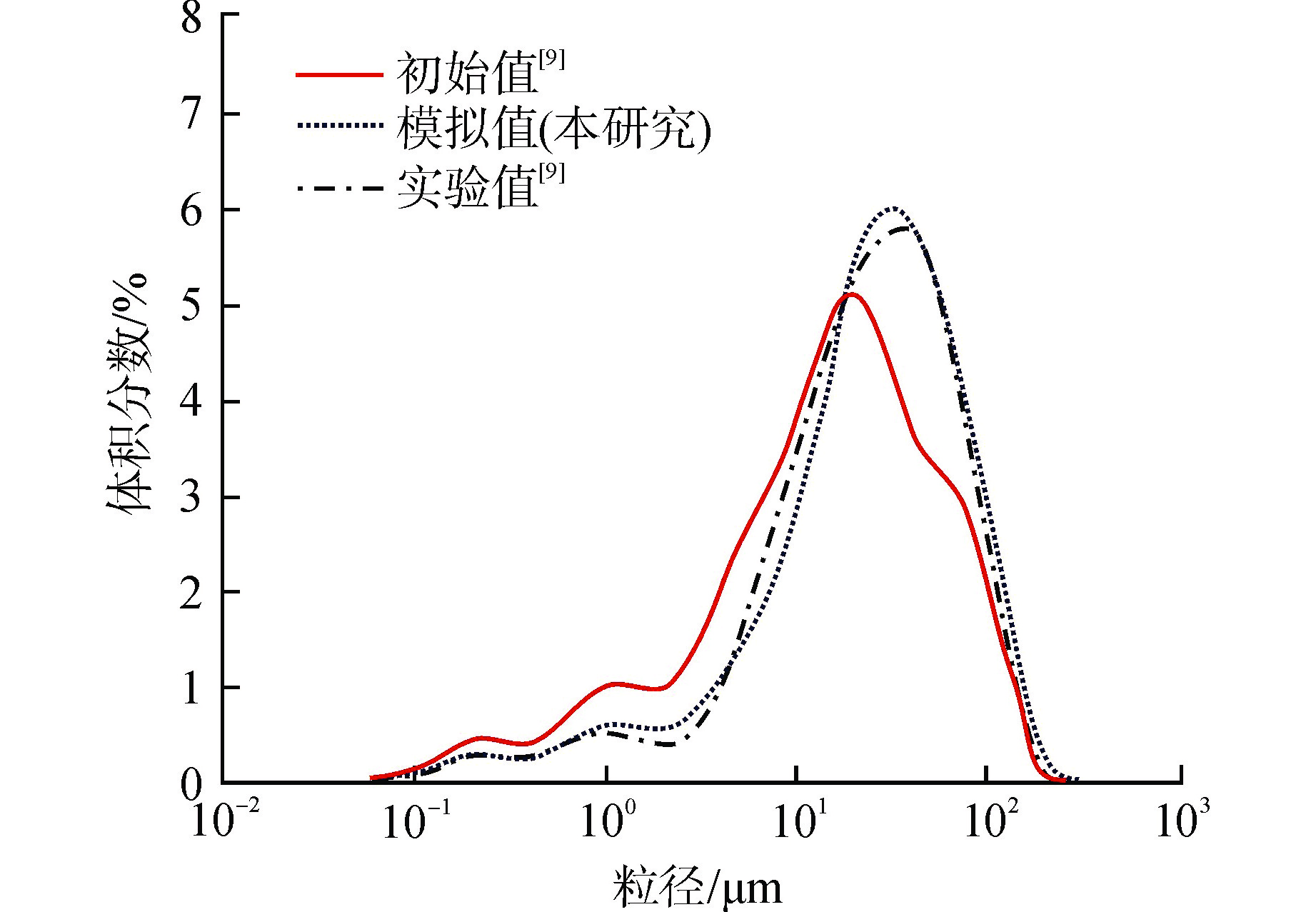Simulation Study on Transport Characteristics of Radioactive Aerosol in Containment
-
摘要: 为探明实际安全壳尺寸下严重事故中放射性气溶胶的输运特征,利用计算流体动力学和颗粒群平衡方程耦合,模拟了严重事故中放射性气溶胶在安全壳内的空间分布规律,并重点定量分析了不同聚并机制和沉积机制对于气溶胶输运过程的影响。结果表明,粒径小于0.1 μm的气溶胶颗粒的相互作用主要受布朗聚并影响,粒径大于10 μm的主要受湍流惯性聚并影响,粒径介于两者之间的受布朗聚并和湍流聚并(湍流惯性聚并和湍流剪切聚并)共同影响。对于沉积现象,粒径小于0.1 μm的气溶胶主要受布朗扩散沉积影响,粒径大于0.1 μm的主要受重力沉积影响。湍流聚并的平均聚并速度是布朗聚并速度的2.99倍,布朗扩散沉积的平均沉积速率是重力沉积的1.38倍。本研究为实际安全壳尺寸下放射性气溶胶去除技术的选取提供了解决思路。Abstract: In order to find out the transport characteristics of radioactive aerosol in a serious accident under the actual containment size, the spatial distribution of radioactive aerosol in a serious accident was simulated by using the coupling of computational fluid dynamics and particle swarm equilibrium equation, and the effects of different coalescence and deposition mechanisms on the aerosol transport process are quantitatively analyzed. The results show that the interaction among aerosol particulates with a particle size smaller than 0.1 μm are mainly driven by Brownian coalescence, while those larger than 10 μm are dependent mainly on turbulent inertial coalescence, and those between the two sizes are dominated by both of Brownian coalescence and turbulent coalescence (turbulent inertial coalescence and turbulent shear coalescence). For the deposition phenomenon, the aerosols with particle size less than 0.1 μm rely mainly on Brownian deposition, while those larger than 0.1 μm are mainly affected by gravity deposition. It is found that the average coalescence velocity of turbulent coalescence is 2.99 times that of Brownian coalescence, and the average deposition rate of Brownian deposition is 1.38 times that of gravitational deposition. This study provides a solution for the selection of radioactive aerosol removal technology under the actual containment size.
-
Key words:
- Containment /
- Aerosol /
- Particle swarm balance /
- Coalescence /
- Deposition /
- Transport properties
-
-
[1] 苏光辉,田文喜,张亚培,等. 轻水堆核电厂严重事故现象学[M]. 北京: 国防工业出版社,2014: 7-14. [2] ALLELEIN H J, AUVINEN A, BALL J, et al. State-of-the-art report on nuclear aerosols: NEA/CSNI/R (2009)5[R]. France: OECD/NEA, 2009. [3] LEE K W, CHEN J, GIESEKE J A. Log-normally preserving size distribution for Brownian coagulation in the free-molecule regime[J]. Aerosol Science and Technology, 1984, 3(1): 53-62. doi: 10.1080/02786828408958993 [4] 刘鹤欣,谭厚章,杜勇乐,等. 亚微米颗粒湍流团聚特性的实验研究[J]. 工程热物理学报,2020, 41(3): 763-770. [5] SLAMA M, SHAKER M O, ALY R, et al. Applications of aerosol model in the reactor containment[J]. Journal of Radiation Research and Applied Sciences, 2014, 7(4): 499-505. doi: 10.1016/j.jrras.2014.08.007 [6] RAJAGOPAL P S, JOSHI M, SHINDE J, et al. Numerical modeling of aerosol transport and dynamics[M]//RUNCHAL A K, GUPTA A K, KUSHARI A, et al. Energy for Propulsion: A Sustainable Technologies Approach. Singapore: Springer, 2018: 345-364. [7] 陶俊,咸春宇,陈军,等. “华龙一号”安全壳内气溶胶重力沉降特性研究[J]. 核科学与工程,2020, 40(5): 751-756. doi: 10.3969/j.issn.0258-0918.2020.05.004 [8] LI J S, ZHANG B, GAO P C, et al. Improvement and validation of aerosol models for natural deposition mechanism in reactor containment[J]. Nuclear Engineering and Technology, 2023, 55(7): 2628-2641. doi: 10.1016/j.net.2023.04.014 [9] LIU H X, YANG F X, LI Z H, et al. Simulation and optimization of the particle agglomeration in an aerodynamic agglomerator using a CFD-PBM coupled model[J]. International Journal of Modern Physics C, 2020, 31(9): 2050121. doi: 10.1142/S0129183120501211 -






 下载:
下载:















